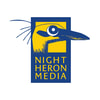|
As the Coronavirus outbreak continues to prompt more cancellations and safety measures, and as experts advise avoiding large gatherings of people, you suddenly find yourself staying home with a lot of time on your hands. With the stakes so high right now, it’s easy to see why novelists find outbreaks of a disease so compelling. With that said, here are 10 recommended pandemic-related reads to help put things in perspective. 1. The Stand by Stephen King This book tells the tale of a patient who escapes from a testing facility, unknowingly carrying a mutated strain of super-flu that could wipe out 99 percent of the world's population within a few weeks. From a frightened public, two leaders emerge: Mother Abagail, a 108-year-old woman who urges them to build a peaceful community in Colorado; and "Dark Man" Randall Flagg, who finds thrill in chaos and violence. The survivors are then left not only to have to choose between Mother Abagail and Randall Flagg, but to decide the fate of all humanity. 2. The Companions by Katie M. Flynn In The Companions, California is under quarantine after a highly-contagious virus hits. Though the living are unable to go out, the dead can saunter about in various forms, from "sad rolling cans to manufactured bodies that can pass for human." This is due to a new "companionship" program, in which people can choose to upload their consciousness before dying as a means of remaining in the custody of their families. "The less fortunate are rented out to strangers upon their death, but all companions become the intellectual property of Metis Corporation, creating a new class of people—a command-driven product-class without legal rights or true free will," the publisher writes of the story. 3. The American Plague by Molly Caldwell Crosby In Molly Caldwell Crosby's The American Plague: The Untold Story of Yellow Fever, The Epidemic That Shaped Our History, a journalist traces the course of the infectious disease known as Yellow Fever which has paralyzed governments, quarantined cities and impacted the nation. In 1900, the U.S. sent three doctors to Cuba to discover how Yellow Fever was spread and take on one of history's most controversial human studies. The American Plague depicts the story of Yellow Fever and its reign in America and Africa, where it continues to strike each year. 4. Pale Horse, Pale Rider by Katherine Anne Porter Porter’s Pale Horse, Pale Rider is set around the Spanish Flu pandemic in 1918 and focuses on a young woman falling in love with a soldier as both influenza and World War I loom ominously. As novelist Alice McDermott makes clear in her commentary on the novel, it’s a book that hasn’t lost its contemporary resonance. 5. Station Eleven by Emily St. John Mandel Much of Mandel’s acclaimed novel is set in the wake of a devastating strain of the flu that kills 99 percent of humanity. The book’s structure juxtaposes scenes of survivors of the epidemic with the sudden end of the world as we know it, as the Georgian Flu wreaks havoc. Mandel’s story is an ultimately hopeful one, focusing on the ways art endures. 6. The Andromeda Strain by Michael Crichton In this 1969 techno-thriller, a group of scientists deal with an epidemic caused by an extraterrestrial microorganism—one that’s constantly evolving and has no precedent in human history in New Mexico. 7. The Coming Plague: Newly Emerging Diseases in a World Out of Balance by Laurie Garrett The Coming Plague is this Pulitzer Prize-winning reporter’s clear-eyed look at how rapidly the modern world has changed the nature of disease, how important preparedness is and how endangered we are without it. 8. Nemesis by Philip Roth This sorrowful story is set in Newark, NJ, in 1944, as the United States is in the grip of the Polio epidemic that killed and disabled thousands of children. 9. The Hot Zone by Richard Preston Preston’s incredible in-depth reporting details the origins and cases involving viral hemorrhagic fevers, particularly Ebola and Marburg viruses—and drives the point home that their spread is often due to human error. But the viruses chronicled in this book are particularly relentless in their infection, able to consume a human body in days and cause a gruesome death, making for a nonfiction book that reads more like a horror story. 10. The Great Influenza by John M. Barry This book is a monumental one--one which provides a depth of perspective and research on the most lethal influenza outbreak in history as well as the morality surrounding a pandemic. At the height of World War I, history’s most lethal influenza virus erupted in an army camp in Kansas, moved east with American troops, then exploded, killing as many as 100 million people worldwide. It killed more people in twenty-four months than AIDS killed in twenty-four years, more in a year than the Black Death killed in a century. But this was not the Middle Ages, and 1918 marked the first collision of science and epidemic disease.
0 Comments
Your comment will be posted after it is approved.
Leave a Reply. |
Categories
All
Archives
March 2022
|
|
Help preserve our history and share our stories through the book and media arts by making a tax-deductible donation today.
Night Heron Media is a 501(c)3 non-profit corporation registered in Texas.
|
Copyright © 2024 by Night Heron Media



 RSS Feed
RSS Feed